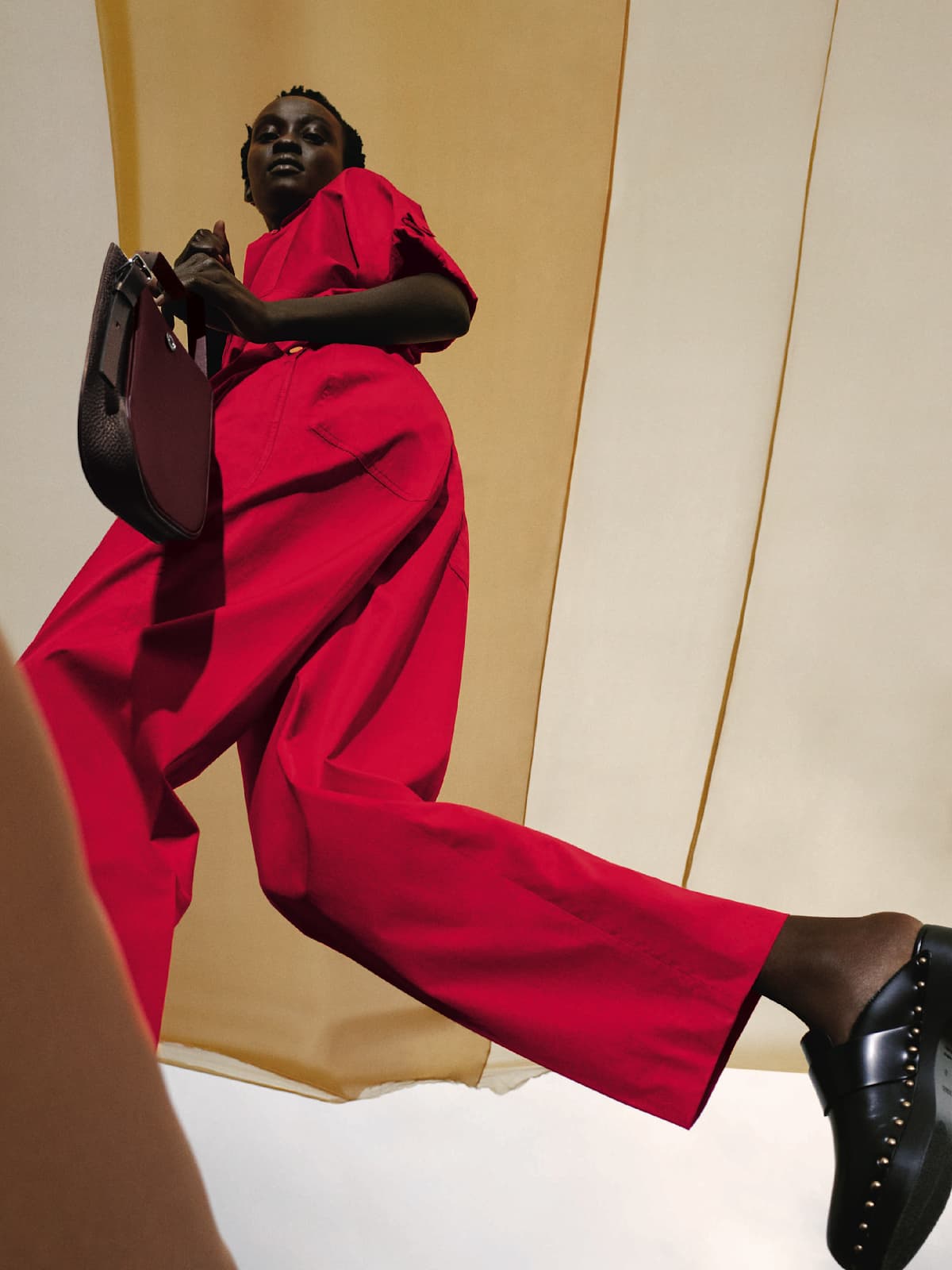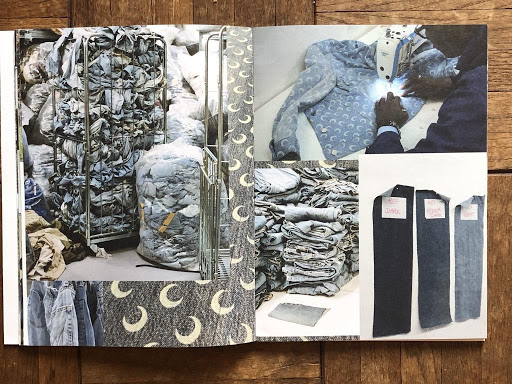How Creating Brand Magazines Transforms Luxury Brands from Fashion to Media
By Long Nguyen

It’s springtime in the real world as the flowers are blooming, the birds are chirping away looking for mates, and the hibernated trees are showing off new buds as signs of fresh new life emerge on their still stiff trunks.
In the world of fashion, too, it is springtime. That means the Spring-Summer 2021 collections shown last fall are trickling into the global stores and e-commerce sites.
Springtime is also when the global fashion brands, from the mega luxury to the young and independent firms, tout their new collection to consumers using all the might of marketing and communication maneuvers across different platforms.
One of these vehicles to reach consumers’ audiences directly is the seasonal magazine or high gloss brochures that are not precisely a catalog in the old sense but a small comprehensive visual presentation of the essence of what each brand is about with alluring photographs and captivating texts.
During the pandemic year, brands have also become more active in generating content on various digital platforms, and this process is likely to accelerate in the immediate future.
Each of these magazines – Le Monde d’Hermès or Dior Mag – is like a collage and patchwork of images and text linking the entire brand’s aesthetics together in one locale in the analog space. They are not just a tribute to the brand’s luxury lifestyle, not so much as propaganda literature but as a visual compendium made expressly to normalize the tropes of the heritage of these brands, seen and written in easy to grab ways.
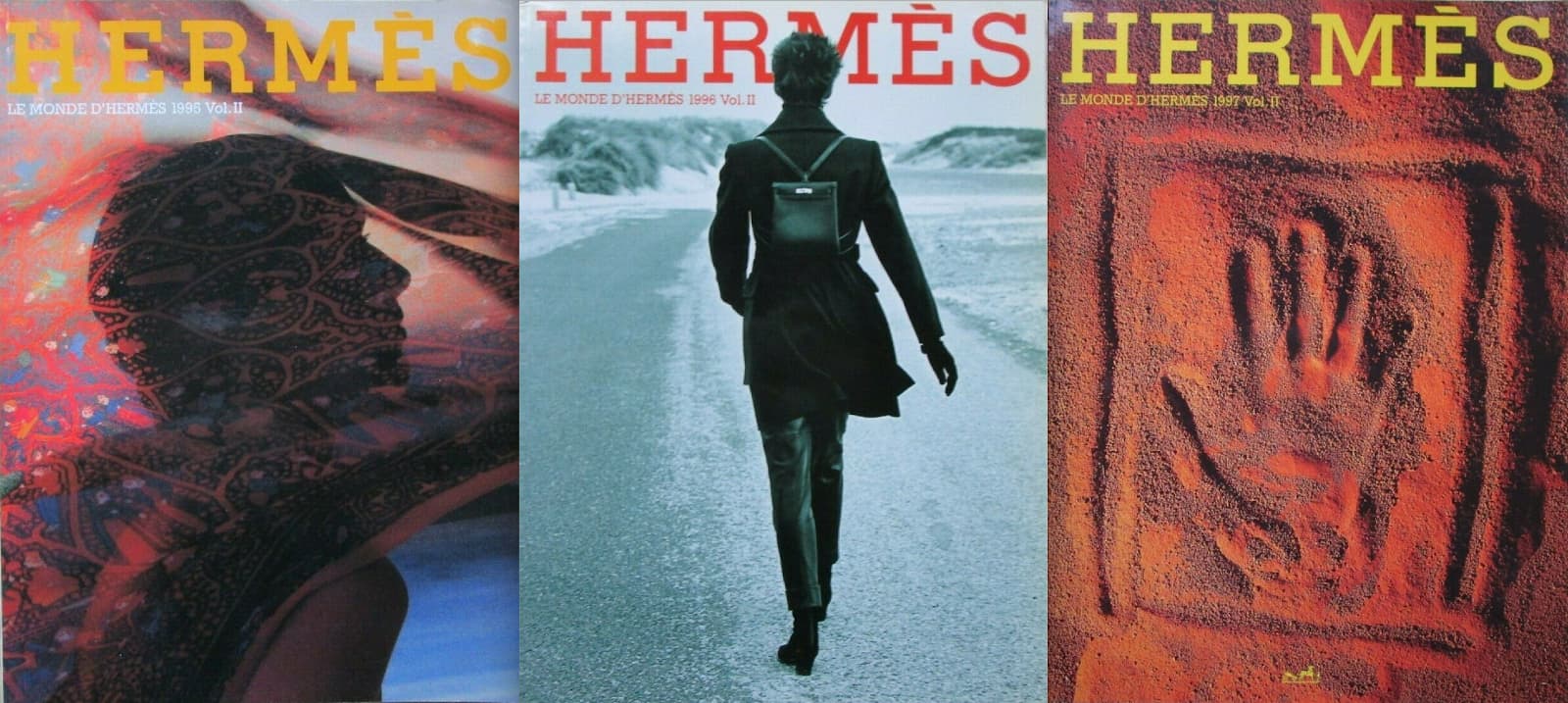
At a deeper level, these magazines and co-work prints are stalwart hedgings by these luxury brands that carefully attend to what and to how audiences and potential consumers view and know their respective brands. They serve the construction of thrilling worldviews. They are beyond the fashion shows, which are like ecstatic bouts that crystalize a very brief moment, but these shows are not enough to sustain an entire season without additional aid.
These brand magazines are to spur the experiences of design and beauty from the ranges of products. In other words, they are like fanzines that real fans and loyal consumers of the brand receive as part of the extension. Indeed, the world portrayed in both these fanzines is more magical and perhaps a little better, with better-made clothes, more excellent fragrances, better skin care, and redder lipsticks.
An odyssey is first and foremost a journey. Traveling around the world, encountering others, and finally coming back to rediscover ourselves. What makes Homer’s text universal is that his hero’s destination is none other than his starting point: Ithaca. To get there, of course, Odysseus must weather many a storm, overcome many obstacles, and resist many temptations, using the strategies hatched by his legendary cunning. But it is a homecoming to his island that matters to him most of all. Who cannot read the enigma of their own lives in the light of this wonderful tale?” wrote Pierre-Alexis Dumas, the artistic director of Hermès in the introduction to the issue number 78 of the print magazine Le Monde d’Hermès.
Titled Hermès: an odyssey, this 78th edition of the print magazine Le Monde d’Hermès, which is now in its 39th year and was started under the helm of the former CEO from 1978 to 2006 Jean Louis Dumas, who wanted to launch a magazine that would complement and extend the aesthetic of the house. This new edition introduces the annual theme for Hermès for 2021 – Odyssey. Dumas refers to this travel and homecoming in his introduction letter as an odyssey set out in 1837 and has since evolved, but despite all the transformations, the brand is as “recognizable today as it was nearly two hundred years ago.”
This seasonal magazine’s origin came from the German subsidiary that created a catalog with the name ‘Die Welt von Hermès,’ and this original issue was published once a year only in German. This German edition inspired Le Monde d’Hermès, which began publication in 1975 in French and English. Now, over 500,000 copies of the magazine are distributed to clients of all métiers and printed in ten languages, including Italian, Russian, Korean, Japanese, traditional and pinyin Chinese, and Spanish.
Hermès)
Olivier Wicker serves as the editor but works closely with a guest editor yearly with different contributions from artists and writers worldwide. Even the art direction for the issues is changed every year to guarantee the process of renewal – a value central to the house. For 2021, Veronica Ditting, the creative director of The Gentlewoman, is overseeing the art direction as Thomas Persson oversaw the 2020 editions for the year of Innovation with Patrick Boucheron, historian and Professor at Collège de France, as guest editor. Pauline Bayle, a theater director, is the guest editor for the 2021 editions.
Since 2019, this magazine is considered an Hermès ‘objet’. The purpose to “approach the theme of the year that has driven every department of Hermès creativity for years, from as many perspectives as possible, and to present the new collections in the most inspiring possible way,” the brand said.
Each year, Dumas chooses a theme – Year of the Hand for 2002, Paris for 2006, Horse for 1993, Fantasy for 2004, Exoticism for 1988, Metamorphosis for 2014, First Steps into the New Millenium for 2000, or Africa for 1997. However, there is a consistency in the content that the issues memorialize trivia and facts about the different métiers that become anecdotes. The year 2015 was the inspirational theme Flâneur where Pierre-Alexis Dumas said that “flânerie is second nature to Hermès” written as part of the house’s roots in 1837 in mid-nineteenth-century Paris.
Besides the usual quotient of men’s and women’s fashion editorials often shot in exotic locations, the magazine’s editorial framework covers the other departments like silks, bags, beauty, and jewelry with a combination of illustrated visual stories and photoshoots.

For example, in issue 77, there are anecdotal stories about how the orange box came into being as the original box was in beige. At the end of the war years, the beige paper was no longer available and the house substituted with the orange color. There’s also a story about the ‘Éclair’ zippers developed for travel bags with a picture from a 1923 catalog. Or how the Chaîne dAncre of the classic gold or silver bracelet came about from Robert Dumas’s ways of recomposing a set of anchors he had seen while vacationing in the Breton harbor. Or how Martin Margiela invented the double leather strap in 1998 for the Cape Cod watch designed by Henri d’Origny when the then artistic director for women’s ready-to-wear remembered the double strapping on a suitcase years earlier.
The theme of Odyssey is about this journey and the transformation along the way, but a transformation that strengthens the traditional values like innovating an old technique to make the artisanal crafts even better. It is the journey of the Hermès house in words, pictures, and audio stories.
Each season, the beautifully printed matte paper book is another example of epic storytelling – the themes vary, the pictures change, and the clothes are new. But the words in each of these Hermès printed magazines, the words, and the corresponding text to explain the images speak more or less of the same spectrum of familiar vocabulary. The spine and backbone of Hermès – “the unwavering fidelity to the artisan’s crafts” – is now depicted in detailed descriptions of silver or gold chain links, the updated new 2021 saddle, and how the hand saddle stitch becomes the house’s artisanal and signature craft.
While the focus is primarily on the print edition as “print has a special role to play in our community,” there are podcasts that extend the storytelling for the year beyond the printed pages. With the Odyssey issue 78, there are two podcasts following the adventures of Penelope, an investigator in the Bureau of Investigations and Research into Objects. In one tale, Penelope visits Lyon’s city and the center of the brand’s silk manufacturing; in the second podcast, she follows clues inside a notebook with secret codes in Tokyo.
Le Monde d’Hermès has now expanded to include a series of podcasts throughout the year and organized conversations where the house will invite different talents in exchanges through talks with customers. “As Hermès is a house of words, a house of stories and conversations, these three media will enhance our community,” said Olivier Wicker of the new added audio experiences in an email from the Paris headquarters.
But, this printed seasonal magazine isn’t the only experiential analog item from Hermès. For the Spring 2021 show last October, the brand sent out a small scrapbook containing the genesis behind the collection with a series of photographs of the clothes interspersed between the visuals of the collage artist Katrien de Blauwer’s artwork and photographer Douglas Mandry.
The scrapbook added a human dimension to how the collection came about rather than just seeing live streaming of a closed fashion show. Now, a leather apron or a knit bodysuit was within the framework of landscapes and open skies rather than just coming alive on the laptops, smartphones, and desktops.
There isn’t any reason to doubt that Le Monde d’Hermès will become another métier at the house perhaps in a few short years.
In the same manner, Dior launched its print magazine Dior Magazine, commonly now referred to as simply Dior Mag, in late September 2012 as a celebration of Raf Simons’ arrival to helm the women’s haute couture collections. Simons had shown his acclaimed debut fall-winter 2012 haute couture early that July, reworking and modernizing the house’s signatures with a more uncomplicated vision of couture with models wearing the new Bar jackets or even light embroidered cocktail dresses in black tailored pants.
Wearing a white Bar jacket and a voluminous black skirt that recalled the classic 1947 New Look, Marion Cottilard, the French actress, graced the debut issue’s cover. This Dior Mag also contained an in-depth interview with Simons, who outlined his thoughts for the house. Since then, Dior Mag is now in 10 languages and French and English – German, Italian, Spanish, Korean, Japanese, Russian, and traditional and pinyin Chinese – and distributed to clients globally. Unlike Le Monde d’Hermès, Dior Mag’s contents are at the house’s main website.

“Dior Magazine is to reveal the spirit and inspirations of the Dior collections and the meaning and richness of their artistic dialogue,” said the house in an email from Paris of the purpose for now quarterly magazine.
These printed “books” real pleasure is that facile translation from heavy-handed fashion ideology into simpler but still multidimensional strata visual and verbal language. Now, the fashion of the New Look of Dior feminization under Maria Grazia Chiuri is all wrapped up in this syncretic of Dior’s heritage and DNA on the one hand and of the same traditions undertaken by female artists in the last few decades as well as now on the other. Of course, all of Chiuri’s work will be in a new art book, ‘Her Dior’ published by Rizzoli.

In these Dior magazines since Fall 2012, the performance action is taken from the house’s high concept and removing a bit of the thinking and replacing the ideology with activities that can be observed, appreciated, and perhaps remembered. It allows the house to maintain that highbrow culture while being in touch with popular culture. Jennifer Lawrence was the cover star for issue 22 about ‘Women of Art,’ and Charlize Theron was on issue 4 about travel.

It is also a manner of making the house heritage a bit easier for today’s young audiences.

The spring 2021 issue 33 focuses on the theme of Artistic Alliances, “…highlighting women’s voices, letting their passions radiate, celebrating their commitments – a veritable standard-bearer of sisterhood in all its forms,” according to the introductory letter. The issue features the filmmaker Alina Marazzi and the artist Lucia Marcucci whom Maria Grazia Chiuri, the women’s artistic director, collaborated with for her spring ready-to-wear show. There’s a detailed look at the fabrication of fabrics by the traditional Indonesian Endek handwoven by women in Bali, now made into collarless embroidered coats.
Other stories in this spring 2021 issue include an exposition on Kim Jones’ work with the mixture of men’s tailoring and couture and a shoot of the designer’s spring collection with a few looks featuring the artwork of the Ghanian artist Amoaka Boafo worn by the model Malick Bodian.

Translating the complicated history and the hidden art of crafts into more accessible vernacular language rendered, such as the intricate collage of skill in the Dior’s women spring 2021 haute couture and the fine points of the saddle stitching at Hermès into relatable tales – quickly told and retold with much of the complications rerouted into simple and straightforward explanations.
While Dior’s approach in the magazine is more intellectual and seasonal, Hermès light and slightly humorous directions are far more memorable in terms of the audience remembering the details that connect to the larger framework that is Hermès. The translation of tradition, history, and fashion culture into pop-cultural allusions made terms and concepts hyper-accessible.

Fashion today is a highly contested terrain. The competitions are fierce between brick and mortar and e-commerce, between real live, live stream, the live-taped transmissions of fashion shows, and between the actual print and the digital. And, don’t forget the competition for audiences and customers.
Despite turning off its social media at the beginning of 2021, the recently launched Bottega Veneta Issue 01 quarterly digital magazine obliges to the requisite demands of this new media platform, at least in the aspect of the fast attention span.
Issue 01, dubbed Summer Madness, released when the Spring-Summer collection arrived into stores and on e-commerce, is rapid. The speedy flow of the different streams of this digital magazine jump from, say, a black and white still of the classic black Nappa leather Intrecciato weaved clutch crossbody shoulder bag to a quick trip to the disco to Missy Elliott’s video remix of her October 1999 all-time hit Hot Boyz.
The Summer Madness Issue 01 incorporates different collaborations with artists such as Barbara Hulanicki, Walter Pfeiffer, Jonathan Frantini, and Masayoshi Matsumoto. Together, it has a conceptual art piece more so than an actual digital magazine. Bottega Veneta is betting on the creative community here as the jumping-off point for the brand in the future, as a two-way street, with at least twenty-eight artists contributing to this new quarterly website.
Still-life and short films set the pace as fast as the six Parkour performers leaping off rooftops in their spring wardrobe at around one hundred and thirty pages that alternate between animations, videos, art, and fragments of the spring advertising campaign sprung up in between some of the takes. The intention to sell products and arouse interest in the brand as an avatar of pop culture is present. A woven leather bag is just an integral part and parcel of today’s zeitgeist in mixing a photo of the close-up of a pink shoe by Tyler Mitchell with the green park with the signature woven pattern barn or even a green heel surrounded by white rabbits by Elaine Constantine.
The audio portion of this Bottega Veneta’s Issue 01 differs from the approach to Dior and Hermès, who are still more dependent solely on the printed format. The voice-over and surely the Missy Elliott music performance filmed by Tyrone Lebon elevate this digital magazine into its stratosphere of an immersive experience. The audience can almost feel the six young kids’ energy as they jump from roof to roof in the piece by Storror.
Interestingly, Bottega Veneta’s Issue is precisely how the brand sees itself at the various intersections with the realities, affinities, and lives of the audience and prospective consumers. It’s a world the Bottega Veneta team knows how to compose, its visual and musical connection ports directly with the brand’s intended audiences.
Publishing a magazine isn’t the only endeavor to extend a brand’s reach to audiences.

The luxury brands are not the only fashion companies publishing printed materials either in the form of small collector books or, in the case of Comme des Garçons, where the Japanese brand has been creating a seasonal or at times yearly series with artwork from different chosen artists for the brand’s announcements of new collections arriving at its stores or the openings of shop-in-shops at various mega department stores.
From 1988 to 1991, Rei Kawakubo launched an oversized print magazine titled Six, a merger of art and fashion with portfolios by leading photographers Peter Lindberg, Paolo Roversi, and Steven Meisel, along with features on artists like Louise Nevelson, Gilbert & George, and the designer Azzedine Alaïa.
At the time, a fashion brand launching its own magazine was unprecedented, but this experimental excursion allowed further explorations of the printed format down the road. The bi-annual publication was not a tool to sell clothes.
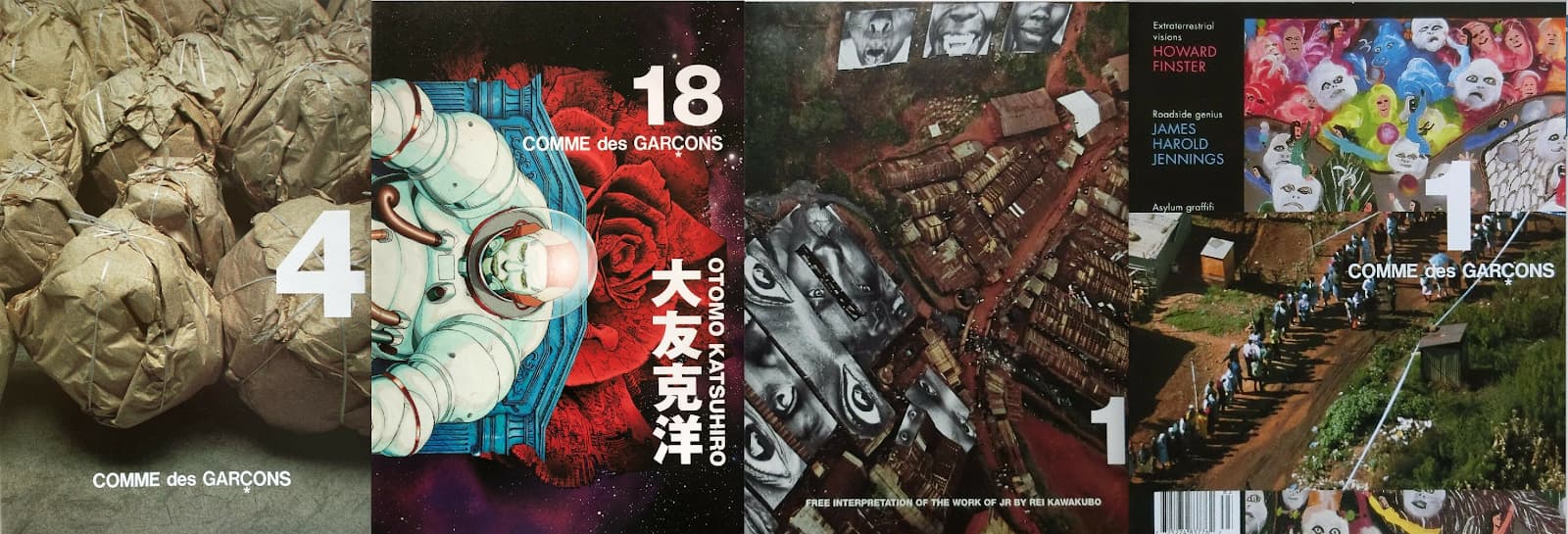
Archives)
The purposes of the Comme des Garçons mailers were practical. They served as announcements of the arrival of new collections to stores. These highly detailed printed brochures with triple foldouts, 3D pop-ups, and special inserts, each labeled with a number to denote the order of their appearance, starting with the number 1 as the first brochure of each year. The leaflets are another manifestation of the myriad of artistic collaborations that have always been the central heartbeat of culture, art, and fashion at this influential independent fashion brand.
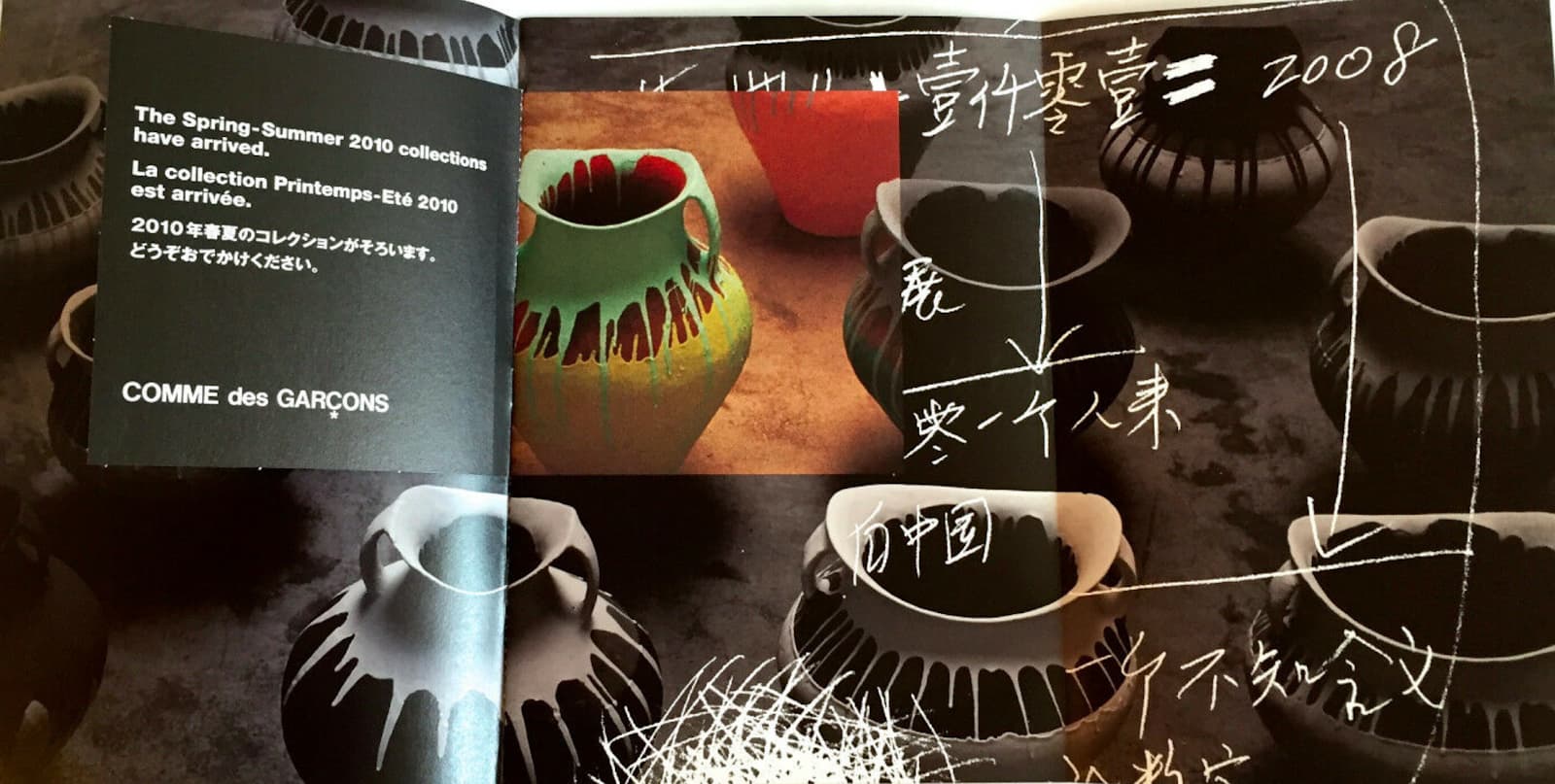

These CDG mailing pieces incorporate influential art within an experimental set of printing innovations. The Chinese artist Ai Wei Wei worked on the brochures for 2010, where the inaugural issue contained a direct quote from the artist and Rei Kawakubo on the philosophy behind their respective work. Katsuhiro Ôtomo, the Japanese manga artist, film director, and creator of the anime franchise Akira, illustrated the mailing brochures for Fall-Winter 2013 that included a small plastic bag with his signature cartoons. The Argentinian art collective Mondongo and the Raw Vision magazine group displayed the 2008 and 2014 direct mail pieces.
The most recent mailer for Spring 2021 features the black and white photographs from Chris Marker, the French writer, photographer, and documentary film director, in a plastic-covered booklet with photos of demonstrations against the Algerian war the May 1968 uprising.
Here and there are the words that essayist Marker had written – “Then came May 1968. The ‘utopia of uniting in a common struggle those who revolt against poverty and those who revolt against wealth.’ I wrote that in Sans Soleit, I’m conscious that it is extremely bad manners to quote oneself, but I am at a loss to summarize it better. In exchange, I offer another quotation from the other side of the ocean. Later on, Abbie Hoffman wrote – ‘We were young, we were reckless, arrogant, silly, headstrong – and we were right.’ “
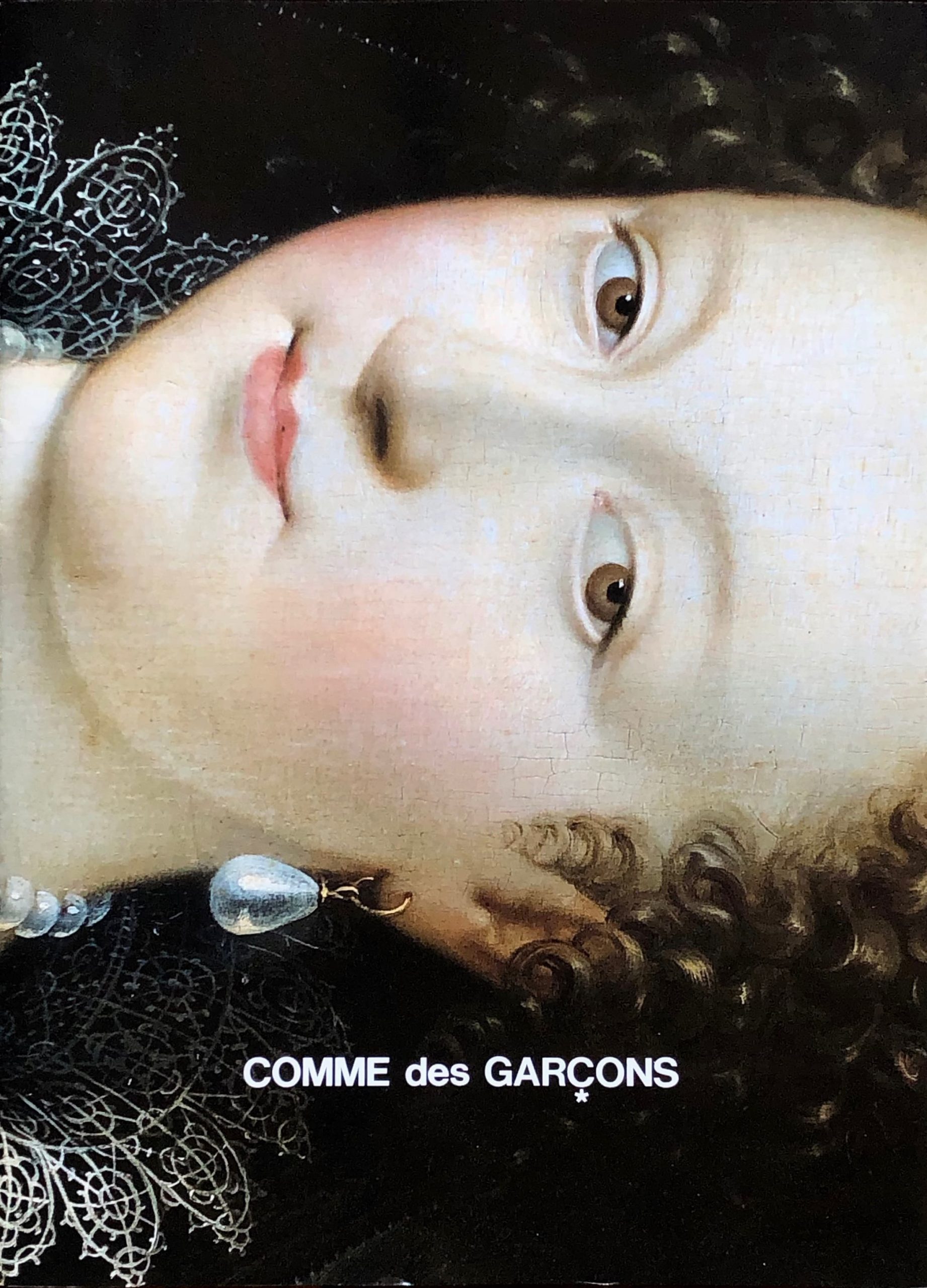

What makes these Comme des Garçons direct mailers interesting is how at CDG everything is essential to the process of creation, whether graphic, clothing, or store layout. The mailers communicated the brand’s ethos and thinking without ever showing any actual fashion products. There is creativity first before there is any trading. Or, in other words, the fusion of art and commerce with little vehemence of a divide – the ultimate spirit of freedom in creation that these mailers allow the audiences to see perhaps complex ideas of identity, fashion, and beauty.
Strangely, these Hermès, Dior, Comme des Garçons, and Marine Serre seasonal magazines and books are ‘literature’ in these post-modern times and post-digital era.
In one place, the audience can view and read the brand’s purposes and initiatives for the current season, like a glorified small textbook. There is a level of intimacy and personalization which these booklets offer that is missing in the digital sphere. These ‘fanzines’ are like a modified retail brick to drive consumer experiences at a smaller scale.
The haze is the internet visual world now, where even the most creative photographs get edged and egged out by mediocre ones at best and, at worst, totally dissonant postings.

The trend toward brand fanzines is accelerating.
Marine Serre, the young French designer launching her brand in 2018, published a limited edition book titled CORE that documented her fashion processes from repurposing fabrics into new garments into cutting a new dress from discarded vintage silk scarves. Serre published the book as part of her Fall 2021 show that encompassed having mutual friends wearing the latest collection of clothes.
In the CORE book with a limited edition run of 1,500 copies, Serre meticulously documented the process of how she created and fabricated her fashions. Serre showed her process from design to the finished garments. The photos narrate how vintage silk scarves become new patchwork silk dresses, how old discarded excess leather from cars transform into leather coats. A new denim jacket with the designer’s signature moon crescent embossments rises from the bound stacks of old denim jeans.
The CORE book cements Serre’s fashion philosophy with her audience now, and for prospective consumers who value a reliable means of production and consumption. CORE is the same as Dior Mag or Le Monde d’Hermès in every way.
Fashion brands, especially the big luxury houses, have become media brands of their own in the past decade with digital advancement.
Beyond the idea of essentially glamorous scrapbooks, more than beauty and brand essence, it is about power and perhaps empire. These printed issues are the testaments similar to a demonstration of power and clout.
It’s the image of the brand’s authority. These printed formats attempt to make this image stick or enforce the idea – it’s a way to sway and engage the intended audience and consumer over a lengthier period, with an authoritative language beyond the standard advertising images.
In the parlance of fashion today, what binds all these different brands with temperaments espousing the tradition of immense refinement, or the expressions of imperial-like connoisseurship, or brands at the edge of avant-garde art, and the consumers together is this same requisite for that sensory and experiential moment.
A brand magazine, an art mailer, or a book can bring about that romance in the plight of the digital age’s mediocrity. That’s the symbiotic fashion ecosystem now.



